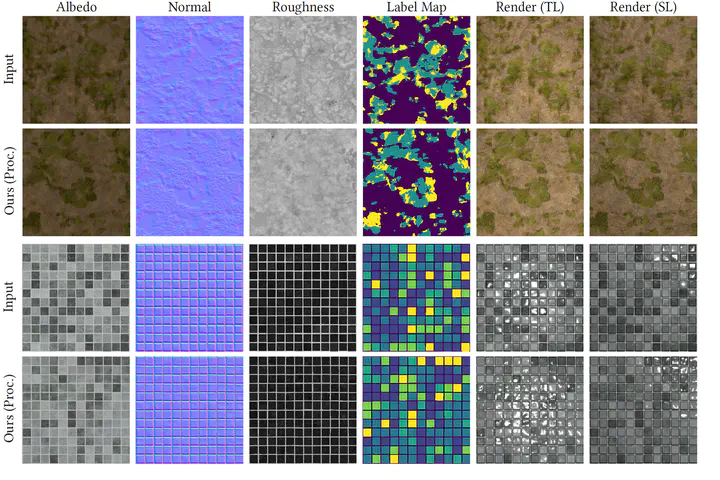
Abstract
Procedural modeling is now the de facto standard of material modeling in industry. Procedural models can be edited and are easily extended, unlike pixel-based representations of captured materials. In this article, we present a semi-automatic pipeline for general material proceduralization. Given Spatially Varying Bidirectional Reflectance Distribution Functions (SVBRDFs) represented as sets of pixel maps, our pipeline decomposes them into a tree of sub-materials whose spatial distributions are encoded by their associated mask maps. This semi-automatic decomposition of material maps progresses hierarchically, driven by our new spectrum-aware material matting and instance-based decomposition methods. Each decomposed sub-material is proceduralized by a novel multi-layer noise model to capture local variations at different scales. Spatial distributions of these sub-materials are modeled either by a by-example inverse synthesis method recovering Point Process Texture Basis Functions (PPTBF) or via random sampling. To reconstruct procedural material maps, we propose a differentiable rendering-based optimization that recomposes all generated procedures together to maximize the similarity between our procedural models and the input material pixel maps. We evaluate our pipeline on a variety of synthetic and real materials. We demonstrate our method’s capacity to process a wide range of material types, eliminating the need for artist designed material graphs required in previous work. As fully procedural models, our results expand to arbitrary resolution and enable high-level user control of appearance.